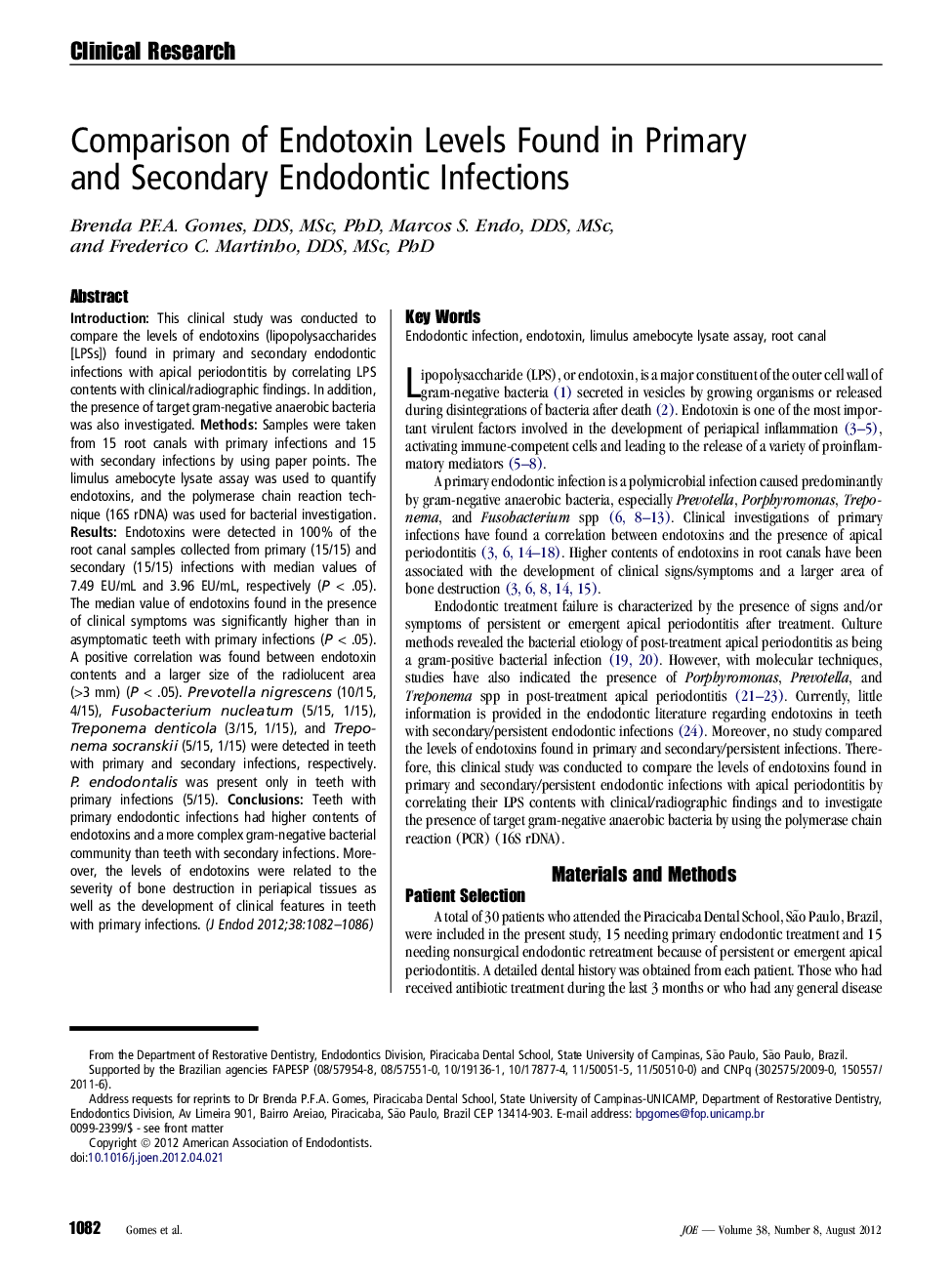| Article ID | Journal | Published Year | Pages | File Type |
|---|---|---|---|---|
| 3150411 | Journal of Endodontics | 2012 | 5 Pages |
IntroductionThis clinical study was conducted to compare the levels of endotoxins (lipopolysaccharides [LPSs]) found in primary and secondary endodontic infections with apical periodontitis by correlating LPS contents with clinical/radiographic findings. In addition, the presence of target gram-negative anaerobic bacteria was also investigated.MethodsSamples were taken from 15 root canals with primary infections and 15 with secondary infections by using paper points. The limulus amebocyte lysate assay was used to quantify endotoxins, and the polymerase chain reaction technique (16S rDNA) was used for bacterial investigation.ResultsEndotoxins were detected in 100% of the root canal samples collected from primary (15/15) and secondary (15/15) infections with median values of 7.49 EU/mL and 3.96 EU/mL, respectively (P < .05). The median value of endotoxins found in the presence of clinical symptoms was significantly higher than in asymptomatic teeth with primary infections (P < .05). A positive correlation was found between endotoxin contents and a larger size of the radiolucent area (>3 mm) (P < .05). Prevotella nigrescens (10/15, 4/15), Fusobacterium nucleatum (5/15, 1/15), Treponema denticola (3/15, 1/15), and Treponema socranskii (5/15, 1/15) were detected in teeth with primary and secondary infections, respectively. P. endodontalis was present only in teeth with primary infections (5/15).ConclusionsTeeth with primary endodontic infections had higher contents of endotoxins and a more complex gram-negative bacterial community than teeth with secondary infections. Moreover, the levels of endotoxins were related to the severity of bone destruction in periapical tissues as well as the development of clinical features in teeth with primary infections.
